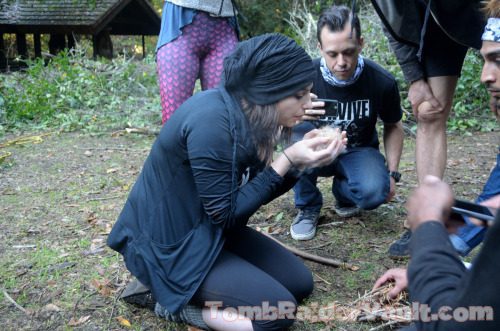The Nvidia Shield TV has gone through quite a few upgrades since it first launched almost three years ago. In addition to being an Android-based game console, it can stream PC games over a home network and supports content from a variety of services, including Netflix, Google Play, and Amazon Video, making it a cord cutter’s dream come true. In 2015, Nvidia launched a cloud-based service called GeForce Now, which can stream video games to Shield devices at their highest video quality settings. Earlier this month, it was announced that the service would be expanded to PCs and Macs, making it possible for gamers to play their favorite PC games using almost any computer from anywhere with a fast internet connection.
But it looks like the Shield TV isn’t done evolving. Earlier this month, Nvidia revealed that the Shield TV would sell as a bundled package (which includes the device, the voice-command enabled remote, and a gaming controller), and that it would also feature 4K HDR video streaming from supported services such as Netflix. Furthermore, Nvidia decided to step beyond gaming and entertainment by integrating features from its artificial intelligence (AI) projects to make the Shield TV the central hub for smart home devices such as Philips Hue lights and Nest thermostats and cameras. An update will bring Google Assistant support to Shield TV, and its capabilities can be enhanced with an upcoming voice-activated device called Nvidia Spot, which can hear commands from almost anywhere in the home.

When asked to describe the Shield TV with its myriad of features, Ali Kani, general manager of Shield at Nvidia, said: “It’s the world’s most advanced streaming media player that provides unmatched experiences in media streaming, gaming and home AI.”
He also added that “it’s the best at delivering 4K HDR content from popular apps like Amazon Video and Netflix. Shield also delivers more gaming capabilities, streaming multiplayer games from the cloud, and 4K HDR casting from a local PC. And coming soon, it’ll be the only streaming media player with AI capabilities in the home with hands-free Google Assistant and SmartThings hub integration.”
Kani also discussed the lessons that Nvidia learned from selling and promoting previous Shield TV models. “One of the biggest takeaways was that our customers really wanted both a remote and a controller,” he said. “While the Shield controller packs the same level of control, many Shield owners felt more comfortable using the remote. With the new Shield TV, we’re bundling a remote for the same price to provide what we feel is the best all in one entertainment experience.”
We asked Kani how the company was engaging with its fans to make them aware of the new Shield TV. “Our core fans are gamers, so we’re bringing gaming to the forefront,” Kani replied. “You’ll find a completely redesigned website that improves discoverability for games so they can see the breadth of options available on Shield.”
Furthermore, Kani noted that, “we also know that our fans want the best performance, so we’re highlighting the platform’s strengths as a streaming media player. Tying this all together is the moniker that Shield is the streamer for gamers. We’re developing a marketing campaign with appropriate assets to help with education and awareness.”
When it comes to reaching past the core audience, Kani said that “it really comes back to content and platform capabilities. By shipping Shield with a remote and a game controller, and adding a lot of content to the platform (e.g. Amazon Video, Spotify, ESPN, Disney), Shield now appeals to a much broader audience. We are also excited to integrate Google Assistant onto Shield in the coming months as it further increases our product attractiveness by providing customers with the industry’s first hands-free TV viewing experience. With all these enhancements, we can now appeal to customers who just want the world’s best streaming experience.”
So, what convinced Nvidia to integrate home AI capabilities, bringing the Shield TV far past its media streaming and gaming origins? “Shield is an Android TV device,” said Kani. Couple that with Nvidia’s leadership in AI and it was a natural fit to work with Google to bring Assistant to TVs.”
He added that “the Google Assistant experience on Shield is fully integrated into our user experience. You can play TV shows or music, fast forward or pause your media simply by using your voice. Google is also optimizing the Assistant experience on TV so you can see visual cards that enhances the audio-only answer you would get on a Google Home device. Finally, Shield integrates Samsung SmartThings hub technology to let our customers control their smart home via voice to do tasks like turn off their TV or lights, change living temperature or even make some popcorn.”
But with devices such as Google Home and Amazon Echo already available, what space is the Shield TV looking to fill? “Shield is designed to enhance the experience of Google Assistant in rooms with a TV,” said Kani. “With a TV screen, customers get enhanced, visual answers from their Google Assistant as well as deep integration into all the content they would typically consume in the living room. When we get to release Nvidia Spot later this year, we will give customers the opportunity to expand access to Google Assistant throughout their home.”
Kani also clarified that the Nvidia Spot will not be required to take advantage of the Shield’s AI features. “Customers can access Google Assistant hands-free through a far-field mic on Shield’s controller. Spot is an optional speaker and mic accessory that extends intelligent ambient control throughout the entire home, enabling Shield to serve as the center of your AI home.”






